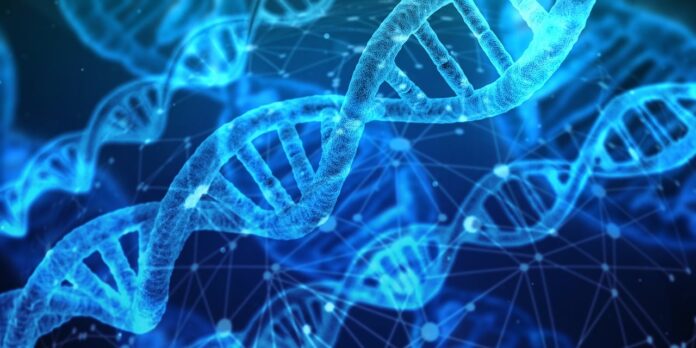New technology can deliver mRNA to to cells in-utero and correct faulty genes
By KATIE HELLMAN — science@theaggie.org
We’ve probably all heard about gene editing at some point or another, either in the context of a novel scientific breakthrough or a far-fetched sci-fi story. If you’re not sure what gene editing entails, it is essentially this: making changes to DNA either by inserting, replacing or deleting a DNA sequence; you can observe the effects in the living organism after birth.
This technology has a variety of applications in the medical field; not only could it be used to alter physical features (like eye color and height), but it can also be utilized to eliminate or lessen the impact of genetic disorders.
A new study, published in the American Chemical Society (ACS) Nano, has made progress in developing the technology to make this happen. The tool is being used in fetal brain cells to alter faulty genes and correct arising neurodevelopmental conditions, including Angelman syndrome and Rett syndrome. These genetic disorders comprise part of the spectrum of neurologic disorders associated with autism and cause issues with speech, communication and movement.
“Neurodevelopmental disorders are devastating diseases that impair cognitive, emotional, and motor development and affect about 15% of children and adolescents globally,” the study reads. “[They] are challenging to treat because disease onset frequently occurs early in life and damage to the brain tissue is permanent. Therefore, treating neurodevelopmental disorders during the fetal stages before disease onset occurs is desirable.”
The gene editing treatment, which is being developed through the collaboration of the Wang Lab at UC Davis and the Murthy Lab at UC Berkeley, would be administered in the womb; when administered early in the process of the organism’s development, the associated risks are lower due to the presence of fewer cells.
To deliver messenger RNA (mRNA) — which will eventually be translated into proteins — to cells, this technology uses a lipid nanoparticle (LNP) formula. The mRNA in the cells is taken into the body via endocytosis, where the LNP carrier is broken and the mRNA is released. It’s crucial to monitor the amount of LNP carriers needed for the treatment, as high doses can cause problems with toxicity and inflammation.
Aijun Wang, a professor of surgery and biomedical engineering, explained the biology behind mRNA’s impact in an interview with UC Davis Health.
“When the cells uptake the LNPs, the particles get degraded in the acidic environment of the cell’s endosome,” Wang said. “This causes a more efficient and early release of mRNA to the cytosol, the liquid component inside the cell where the mRNA will be translated into proteins. That is where we want to have the mRNA to be effective and functional.”
This method of gene editing has been tested in a mouse model thus far; when LNP with mRNA was introduced into a fetal mouse brain’s ventricles, the mRNA was translated into proteins that edited the genes responsible for the development of Angelman syndrome. The nanoparticles were taken up in the brain and resulted in the editing of 30% of brain stem cells, 60% of hippocampus neurons and 40% of cortex neurons.
“The mRNA is like the Lego manual that has instructions to put the pieces together to form functional proteins,” Wang said. “The cell itself has all the pieces to build CAS9 [a protein that aids in the process of gene editing]. We just have to supply the mRNA sequence, and the cell will take and translate it into proteins.”
The goal of the treatment is to eventually be successful enough to prevent genetic conditions from developing while still in-utero. If enough neurons are corrected with the use of gene editing, infants with the original genetic makeup for these conditions could be born without symptoms.
Written by: Katie Hellman — science@theaggie.org





